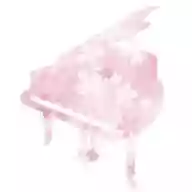[For Beginners] Recommended Ghibli Masterpieces You’ll Want to Play on the Piano
Studio Ghibli has produced numerous animated films that represent Japan.
Alongside their moving stories, many unforgettable songs have been born.
Not only the theme and insert songs, but also the background music that plays throughout the films is memorable, and many people may find themselves recalling the music together with iconic scenes—and perhaps wanting to try playing it on the piano at least once.
Many pieces from Studio Ghibli’s works are perfectly suited to the piano.
In this article, we introduce Ghibli pieces recommended for piano beginners.
Start your piano journey with your favorite song!
- [Disney] Playable even if you’ve just learned Do-Re-Mi! A selection of iconic songs from beloved Disney animations
- Disney Classics on Piano: A Curated Selection of Easy Pieces, Perfect for Recitals
- [Anisong] Easy for Piano Beginners! Recommended Practice Pieces
- [For Beginners] I Want to Play These on Piano! Recommended Anime Songs Compilation
- Recommended anime theme songs for children: timeless anime song classics you should listen to at least once.
- Pick up famous and popular anime songs! Along with piano solo
- [Piano × Vocaloid] A selection of recommended songs that are easy for beginners to play
- Disney songs to listen to at Christmas: a collection of classics that color the holiday season
- Songs from Castle in the Sky (Laputa): the theme song and insert songs.
- [Children's Song] Easy for Piano Beginners! Introducing Songs with Simple Chords
- You can instantly spot the most popular anime among kids! A collection of works that elementary schoolers are crazy about.
[For Beginners] Recommended Ghibli Masterpieces to Play on Piano (21–30)
I stopped being alone.Akiko Yano

The theme from “My Neighbors the Yamadas” is performed here in a lovely piano arrangement.
I’ve previously introduced an orchestral version, but when this gentle depiction of everyday life is rendered on piano, it becomes even more immersive, like being drawn into a world of memories.
Everyday life is something everyone has, and it’s unique to each person—not measured by anyone else’s standards.
Yet when the everyday life that must have been mine is shown as images, a quiet feeling of “this is somehow nice” arises.
This piano version touches many people’s heartstrings and will surely brighten the listeners’ everyday lives.
The Pigeon and the BoyJoe Hisaishi

This piece used in Studio Ghibli’s classic Castle in the Sky (Laputa) was composed by Joe Hisaishi.
It’s included on the film’s image album, and in the movie, the scene where the protagonist Pazu plays the trumpet is especially memorable.
You can feel the influence of minimal music that blends elements of classical and film music, giving it a brilliant flair.
Since the original features a single melodic line played by trumpet, simply tracing the melody with your right hand alone will bring you much closer to the original.
Once you’re comfortable, add the left hand to make your performance even more dazzling!
If I'm wrapped in kindnessYumi Matsutoya

This is a song by Yumi Arai, well-known as the ending theme of the film Kiki’s Delivery Service.
Its simple, nostalgic melody makes you want to hum along—so charming, isn’t it? Because the left-hand range is narrow and it’s easy to focus on the right hand, it’s a great piece for piano beginners who aren’t yet used to playing with both hands.
Once you’ve mastered the right-hand melody, try adding just the left-hand bass notes—one note per measure—and when you’re comfortable, challenge yourself with versions that add accompaniment patterns to the left hand.
My Neighbor TotoroAzumi Inoue / Joe Hisaishi

The ending theme of the film My Neighbor Totoro conjures up images of the Catbus carrying Totoro, Satsuki, and Mei racing across a starry sky.
Alongside “Sanpo,” it’s one of the most popular Ghibli songs.
Phrases where the melody’s notes cross over bar lines may make two-handed playing feel a bit challenging, but if you practice with a simple left-hand accompaniment, it should be easier to grasp the rhythm in your right hand.
Be sure to count carefully as you play so you don’t rush through the parts where notes are held for a long time.
Promise of the WorldYumi Kimura / Shuntaro Tanikawa

This piece is known as the theme song of Studio Ghibli’s masterpiece Howl’s Moving Castle.
The music was composed by Yumi Kimura, with lyrics by the poet Shuntaro Tanikawa.
Yumi Kimura is a singer and composer famed for her distinctive singing-and-playing style using the lyre, and she came into the spotlight in 2001 with Always With Me, the theme song for Spirited Away.
Centered on the theme of parting from a loved one, this work features a gentle melody and tender lyrics.
With its simple instrumentation and moving words, it has deeply touched many listeners.
It’s highly recommended for those who want to play a calm and beautiful piece.
A Town with an Ocean ViewJoe Hisaishi

Joe Hisaishi’s famous piece “A Town with an Ocean View,” well known as an insert song from the Studio Ghibli film Kiki’s Delivery Service.
Its charm lies in a simple, friendly melody that instantly brings scenes from the movie to mind.
Since many piano scores have been published, beginners can easily give it a try by choosing sheet music with note names written in, or simple arrangements built from a single melody line and bass notes.
Of course, the richer the harmony, the closer you get to the feel of the original, so once you’ve gained some proficiency, try tackling intermediate or advanced arrangements as well!
The Legend of AshitakaJoe Hisaishi

Composed by Joe Hisaishi, this piece is included on the soundtrack of the film Princess Mononoke.
It serves as the main theme symbolizing the protagonist Ashitaka’s strong resolve and inner conflict, characterized by grand orchestration.
Blending elements of classical and folk music, it musically expresses the theme of the clash between nature and humanity.
Evoking the image of a forest just by listening, the piece takes on a different charm when played on the piano.
The tempo is relaxed and there are no difficult rhythms, making it a great recommendation for beginners at the piano.
Give it a try and practice it!






